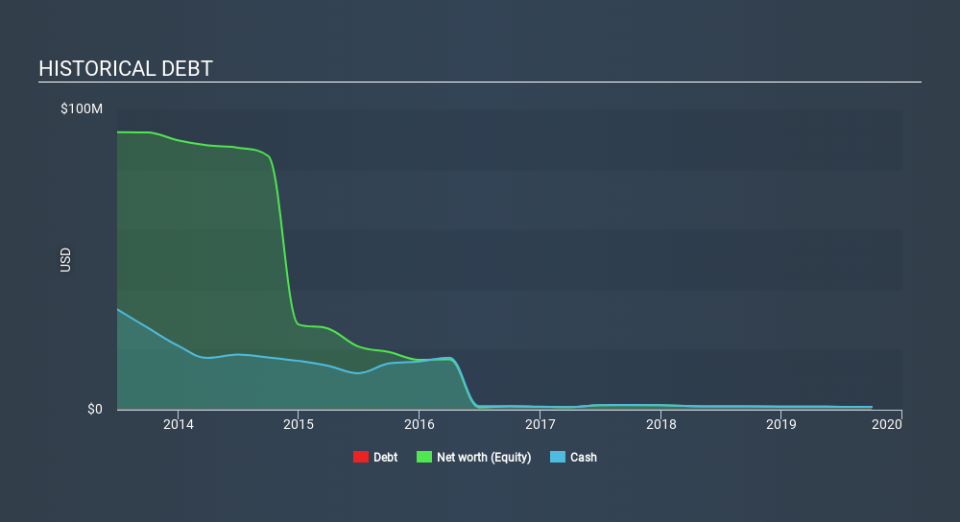We're Excited To See How ROK Resources (CVE:ROK) Uses Its Cash Hoard To Grow

There's no doubt that money can be made by owning shares of unprofitable businesses. For example, although software-as-a-service business Salesforce.com lost money for years while it grew recurring revenue, if you held shares since 2005, you'd have done very well indeed. But while history lauds those rare successes, those that fail are often forgotten; who remembers Pets.com?
So, the natural question for ROK Resources (CVE:ROK) shareholders is whether they should be concerned by its rate of cash burn. For the purposes of this article, cash burn is the annual rate at which an unprofitable company spends cash to fund its growth; its negative free cash flow. Let's start with an examination of the business's cash, relative to its cash burn.
View our latest analysis for ROK Resources
How Long Is ROK Resources's Cash Runway?
A cash runway is defined as the length of time it would take a company to run out of money if it kept spending at its current rate of cash burn. When ROK Resources last reported its balance sheet in September 2019, it had zero debt and cash worth US$963k. Looking at the last year, the company burnt through US$131k. Therefore, from September 2019 it had 7.4 years of cash runway. Even though this is but one measure of the company's cash burn, the thought of such a long cash runway warms our bellies in a comforting way. You can see how its cash balance has changed over time in the image below.
How Is ROK Resources's Cash Burn Changing Over Time?
Because ROK Resources isn't currently generating revenue, we consider it an early-stage business. So while we can't look to sales to understand growth, we can look at how the cash burn is changing to understand how expenditure is trending over time. Notably, its cash burn was actually down by 69% in the last year, which is a real positive in terms of resilience, but uninspiring when it comes to investment for growth. Admittedly, we're a bit cautious of ROK Resources due to its lack of significant operating revenues. We prefer most of the stocks on this list of stocks that analysts expect to grow.
How Hard Would It Be For ROK Resources To Raise More Cash For Growth?
There's no doubt ROK Resources's rapidly reducing cash burn brings comfort, but even if it's only hypothetical, it's always worth asking how easily it could raise more money to fund further growth. Generally speaking, a listed business can raise new cash through issuing shares or taking on debt. Commonly, a business will sell new shares in itself to raise cash to drive growth. By looking at a company's cash burn relative to its market capitalisation, we gain insight on how much shareholders would be diluted if the company needed to raise enough cash to cover another year's cash burn.
Since it has a market capitalisation of US$2.8m, ROK Resources's US$131k in cash burn equates to about 4.7% of its market value. That's a low proportion, so we figure the company would be able to raise more cash to fund growth, with a little dilution, or even to simply borrow some money.
So, Should We Worry About ROK Resources's Cash Burn?
As you can probably tell by now, we're not too worried about ROK Resources's cash burn. For example, we think its cash runway suggests that the company is on a good path. And even its cash burn relative to its market cap was very encouraging. Looking at all the measures in this article, together, we're not worried about its rate of cash burn, which seems to be under control. Separately, we looked at different risks affecting the company and spotted 2 warning signs for ROK Resources (of which 1 is a bit concerning!) you should know about.
If you would prefer to check out another company with better fundamentals, then do not miss this free list of interesting companies, that have HIGH return on equity and low debt or this list of stocks which are all forecast to grow.
If you spot an error that warrants correction, please contact the editor at editorial-team@simplywallst.com. This article by Simply Wall St is general in nature. It does not constitute a recommendation to buy or sell any stock, and does not take account of your objectives, or your financial situation. Simply Wall St has no position in the stocks mentioned.
We aim to bring you long-term focused research analysis driven by fundamental data. Note that our analysis may not factor in the latest price-sensitive company announcements or qualitative material. Thank you for reading.



